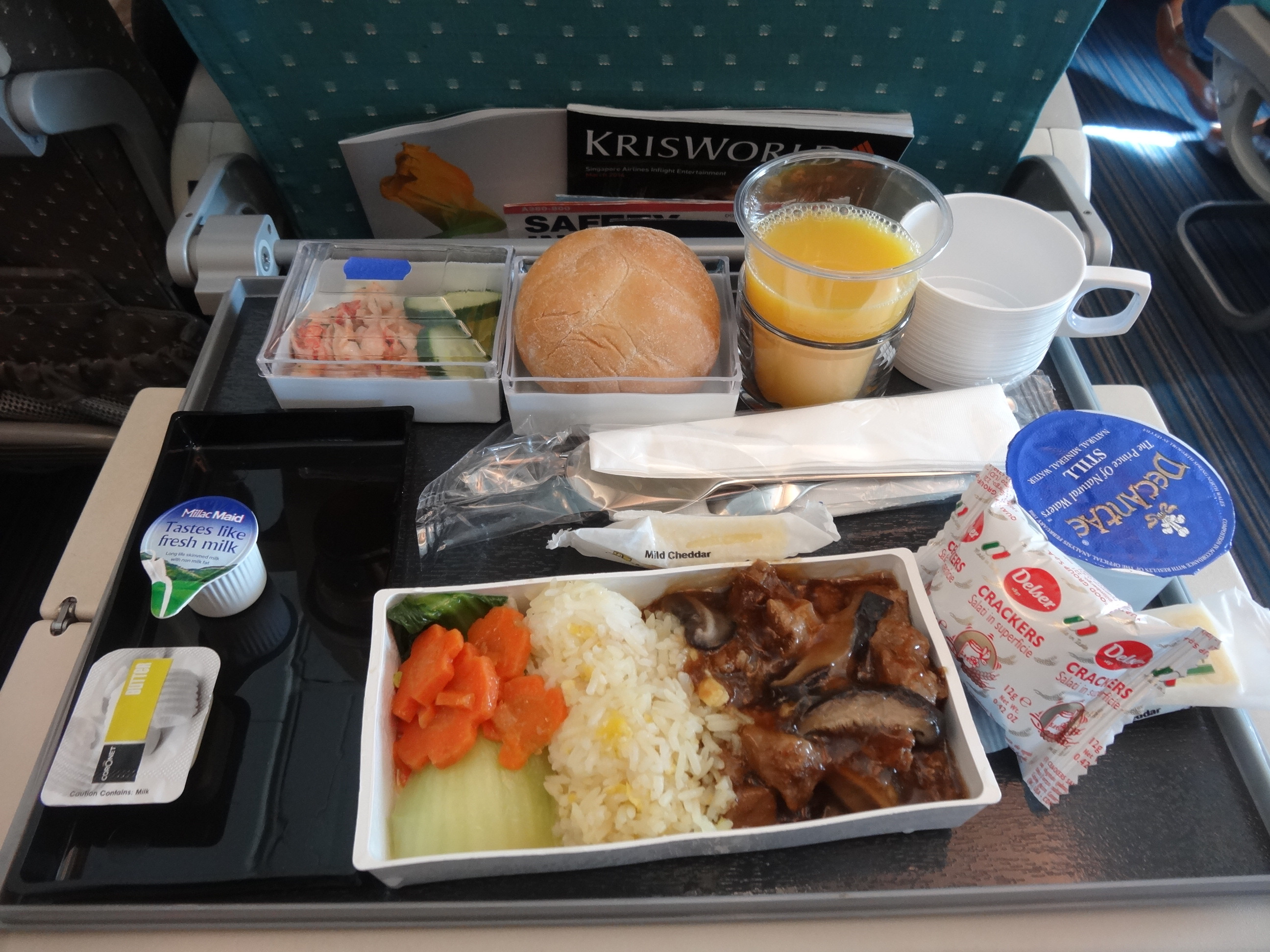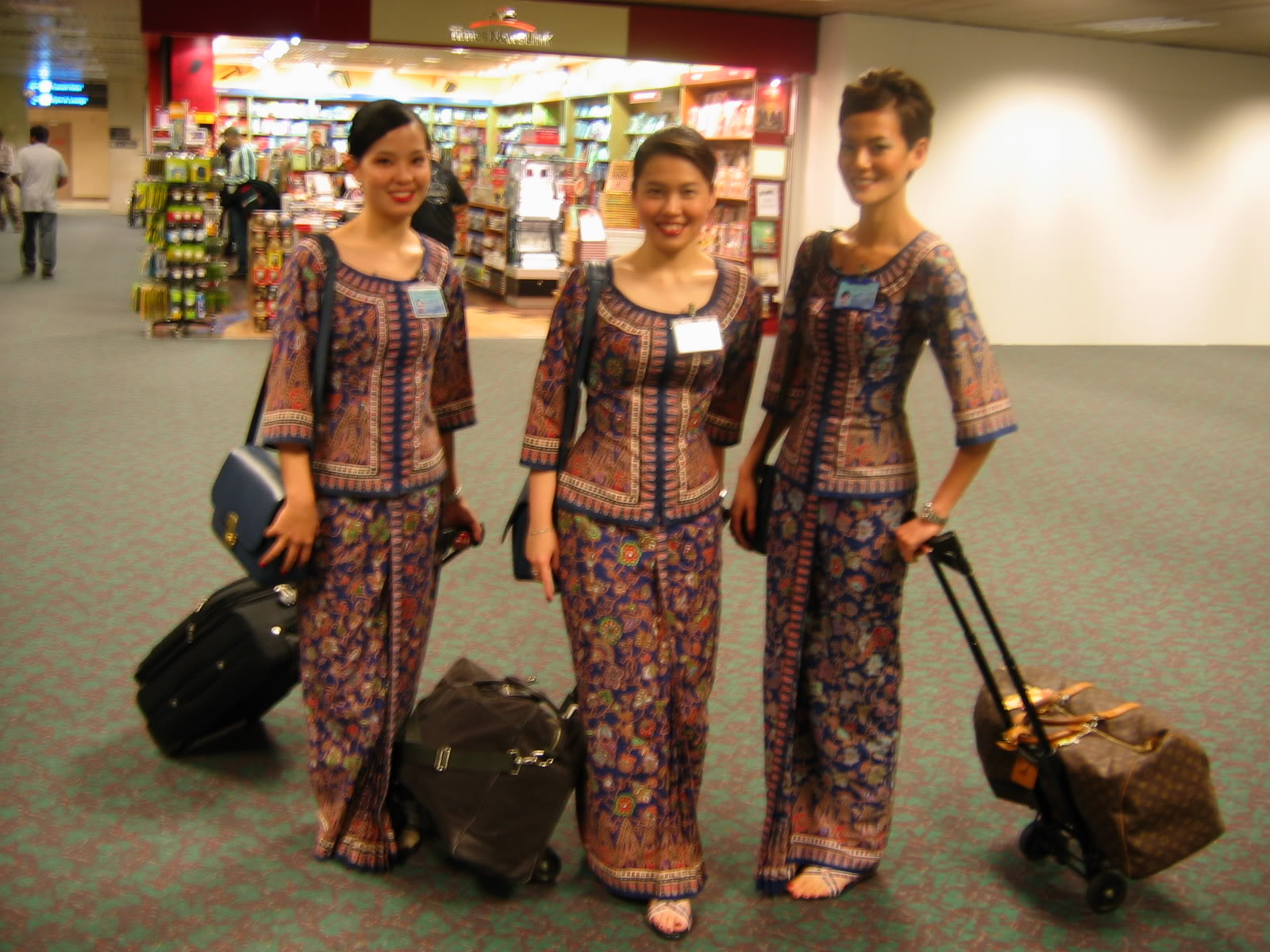Singapore Airlines stands as a titan in the aviation industry, renowned not only for its exceptional service and luxurious travel experience but also for its instantly recognizable and iconic cabin crew uniform. Often referred to as the “Sarong Kebaya,” this unique attire is more than just clothing; it is a powerful symbol of the airline’s brand identity, embodying Asian grace, hospitality, and the high standards Singapore Airlines is celebrated for globally. While the original article from onlineuniforms.net provides a comparative overview of Southeast Asian airlines, including mentions of uniforms, this article will delve deeper into the fascinating story and significance of the Singapore Airlines Uniform, exploring its design, history, and lasting impact.
 Singapore Airlines economy class lunch
Singapore Airlines economy class lunch
The History and Evolution of the “Singapore Girl” Uniform
The Singapore Airlines uniform is inextricably linked to the “Singapore Girl” persona, a marketing concept that has been instrumental in building the airline’s global brand. In the 1970s, as Singapore Airlines emerged as an independent entity from Malaysia-Singapore Airlines (MSA), it sought to create a distinctive identity. French haute couture designer Pierre Balmain was commissioned to create a uniform that would reflect the airline’s aspirations for elegance and Asian hospitality.
In 1968, even under MSA, the Sarong Kebaya designed by Balmain was introduced, and it became the uniform for Singapore Airlines upon its formation in 1972. Balmain drew inspiration from the traditional Malay and Indonesian dress, the Sarong Kebaya. This garment, traditionally worn in Southeast Asia, consists of a close-fitting blouse (kebaya) and a wraparound skirt (sarong). Balmain adapted this classic attire, creating a uniform that was both culturally resonant and sophisticated for the modern air travel environment.
The choice of the Sarong Kebaya was not just about aesthetics. It was a strategic decision to project an image of Asian warmth and attentiveness, differentiating Singapore Airlines from its Western counterparts. The “Singapore Girl,” adorned in this elegant uniform, became the embodiment of the airline’s brand promise – a symbol of personalized, gracious service delivered with Asian charm.
Design Elements and Symbolism of the Sarong Kebaya
The Singapore Airlines Sarong Kebaya uniform is distinguished by several key design elements that contribute to its iconic status:
-
Batik Fabric: The uniform is crafted from batik, a traditional textile art form common in Indonesia and Malaysia. Batik is created using wax-resist dyeing techniques to produce intricate patterns and designs on fabric. The batik used in the Singapore Airlines uniform features a unique floral motif, specifically designed for the airline. This bespoke batik pattern sets the uniform apart and reinforces its connection to Southeast Asian culture.
-
Color Coding: The color of the uniform is not uniform across all cabin crew. It is a subtle yet significant indicator of seniority.
- Blue: The most common color, worn by flight attendants.
- Green: Worn by Leading Stewards.
- Red: Distinguishes Chief Stewards and Inflight Managers.
- Purple: Worn by Chief Stewards and Inflight Managers.
This color-coded system adds a layer of hierarchy and visual distinction within the cabin crew, while maintaining a cohesive overall look.
-
Cut and Fit: The Kebaya blouse is tailored to be form-fitting yet elegant, accentuating the feminine silhouette while allowing for ease of movement. The sarong is wrapped and secured to provide both comfort and a graceful appearance. The length and cut are designed to be professional and modest, aligning with the airline’s image of sophistication.
-
Accessories: The uniform is completed with subtle accessories that enhance its polished look. Cabin crew typically wear simple jewelry, and their hair is styled neatly, often in a classic bun or chignon. Make-up is applied in a natural and understated style, maintaining a focus on professionalism and approachability.
 sqcrew
sqcrew
Recognition and Awards: A Uniform Celebrated Globally
The Singapore Airlines uniform has garnered international acclaim and recognition for its timeless design and cultural significance. As mentioned in the original article, SKYTRAX, a renowned airline industry ranking site, has recognized the Singapore Airlines uniform as the “Best Asian Airline Uniform.” This award is a testament to the uniform’s enduring appeal and its success in representing the airline’s brand values.
Beyond formal awards, the Singapore Airlines uniform has become a cultural icon, instantly recognizable around the world. The “Singapore Girl” in her Sarong Kebaya has been featured in countless advertisements, promotional materials, and travel publications, solidifying her image as a symbol of Asian hospitality and the epitome of in-flight service excellence.
The uniform’s enduring popularity can be attributed to its successful blend of cultural heritage and modern elegance. It is a uniform that is both respectful of tradition and perfectly suited to the demands of contemporary air travel. It projects an image of grace, efficiency, and warmth, qualities that passengers associate with the Singapore Airlines experience.
Singapore Airlines Uniform in Comparison
While the original article compares the uniforms of several Southeast Asian airlines, including Thai Airways and Malaysia Airlines, it’s clear that the Singapore Airlines uniform stands out for its unique design and powerful brand association. The Malaysia Airlines uniform, as noted in the original article, shares similarities with the Sarong Kebaya style, but it is perceived as “more bland” in the author’s opinion. This highlights the distinctiveness of the Singapore Airlines design, which has successfully created a unique and memorable visual identity.
The Thai Airways uniform, described as “a little plain” in the original article, adopts a different approach, focusing on color coordination with the airline’s livery. While visually appealing, it lacks the same level of cultural resonance and iconic status as the Singapore Airlines Sarong Kebaya.
Garuda Indonesia, also mentioned in the original article, features variations in its uniform colors, but their designs, while incorporating Indonesian elements, do not possess the same global recognition as the Singapore Airlines uniform.
The Singapore Airlines uniform has effectively set a benchmark in the airline industry, demonstrating how a uniform can be more than just functional clothing; it can be a powerful tool for branding, cultural representation, and creating a lasting impression on passengers.
Conclusion: The Enduring Legacy of an Iconic Uniform
The Singapore Airlines uniform is a remarkable example of successful design that transcends mere functionality. The “Sarong Kebaya” is a carefully crafted symbol that embodies the airline’s core values of elegance, Asian hospitality, and unwavering commitment to service excellence. From its historical origins and Pierre Balmain’s inspired design to its intricate batik patterns and color-coded seniority system, every element of the uniform contributes to its iconic status.
The uniform’s global recognition and numerous accolades are a testament to its enduring appeal and its effectiveness in representing the Singapore Airlines brand. It is a visual reminder of the airline’s dedication to providing a world-class travel experience, delivered with the grace and warmth of the “Singapore Girl.” As Singapore Airlines continues to soar to new heights in the aviation industry, its iconic uniform will undoubtedly remain a symbol of its proud heritage and its unwavering commitment to excellence.
